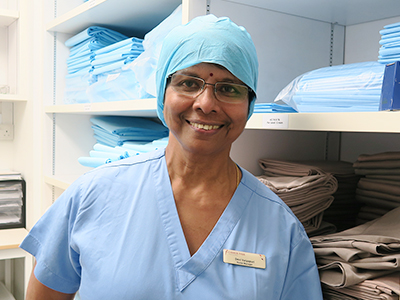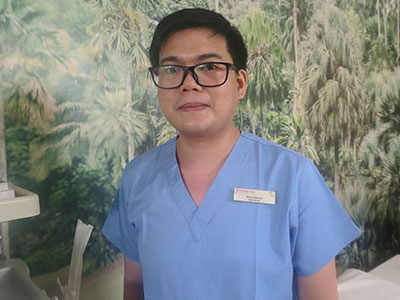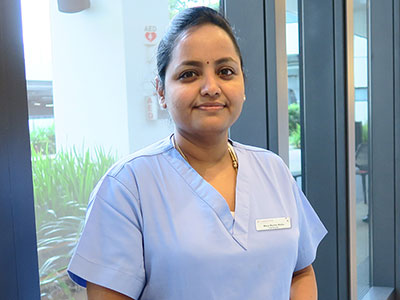
Each day, Devi Vaiyapuri, Nurse Manager (NM) at Central Sterile Supplies Department (CSSD) and her team ensures different types of instruments go through proper decontamination and sterilization so that they are safe for use on the next patient.
The CSSD is that one place within a hospital facility that not many will get to see what goes on inside. Even fewer understand the integrative and critical role it plays in the Hospital's infection control. Like Roald Dahl’s Willy Wonka and the Chocolate Factory, it is teeming with activity.
"As in all clinical areas, the responsibilities of the CSSD staff are very crucial. We have to provide quality assured sterilization services to ensure that patient safety is not compromised," she said.
All the instruments have to be decontaminated, sterilized and despatched sets are scanned and saved in the database. These information are easily retrievable as and when they are needed. Validation results for decontamination and sterilization processes are manually documented in a systematic manner which is critical in an event of traceability to find the source of infection swiftly and effectively.
“This is why I always remind our staff the importance of proper documentation," NM Devi explained.


NM Devi was one of the pioneering staff at FPH's CSSD. With more than 40 years as a scrub nurse and as a CSSD staff in both public and private hospitals respectively, she arrived at FPH in 2014.
"Most of the attention goes into establishing work instructions (WI) and standard operating procedures (SOP). To ensure strict compliance to infection control protocols, plenty of attention and stringent workflows in compliance to MOH guidelines are required,” she explained.
“We had to standardize the work processes according to infection control protocols and to instil a culture of “doing what’s right” every step of the way. That means ensuring no shortcuts and that processes and practices are consistently followed,” NM Devi added.

“Only a few technicians who came onboard were trained and skilled but the rest were mostly inexperienced. I was also new to setting up a CSSD from the ground up. Looking back, it is satisfying to know that we now have an adequate design workflow in motion. I was also fortunate to have a cohesive team. They were happy to take on more responsibilities than they had been holding on to before. From preparing reports to administrative duties like uploading information about instruments into the documentation system, stock taking, planning rosters and so on. It gave them a wholesome sense of their functions," she said proudly.
Her 47th year in nursing this year, NM Devi started her nursing career after graduation and started off doing bedside nursing in the medical and surgical wards. However, her interest lies in operating theatre (OT) nursing.
“I took up an operating theatre nursing course. From that point onwards, I was in the operating theatre for more than 20 years before spending another 16 years in CSSD," NM Devi said.
A scrub nurse in the OT is responsible for maintaining the sterile field throughout the surgery and should be able to anticipate the surgeon’s needs, select and pass the required instruments and supplies. In talking to NM Devi, it is not surprising to find these attributes in her.
“Working in CSSD requires discipline. Every day, we face the same instruments and go through the same motion. From decontamination to sterilization and lastly, despatching; and ensuring zero incident of break in sterility. Though the process is the same, the attention to detail required is no less especially when checking instruments before packing. There is always something new to learn and share," she described.
"It can be kind of boring and mundane too because we have almost no interaction with external people except for vendors who come to deliver consumables or with other nurses if they need to collect something urgently," she said candidly.
Even so, it did not stop NM Devi from going back to CSSD after moving on from her role as an operating theatre nurse.

I’m a Male Nurse and I Choose Nursing
Breaking stereotypes in a profession dominated by women, this nurse stays true to his passion.
Read his story

Nursing during the Pandemic
Find out what it is like to be a nurse on the frontline during the COVID-19 pandemic.
Read her story

A Voice for the Patients
As patient advocates, these nurses intervene when there is a care concern to protect the patients' interests.
Read her story